
English Blogs
"Let's Learn, Explore, and Connect to the World"

Present Perfect Continuous 2
- Tokita Akira
- Basic English Grammar Blog

II. Understanding the Present Perfect Continuous
 The Present Perfect Continuous tense is a fascinating aspect of English grammar that focuses on actions or situations that began in the past and are still continuing in the present. This tense not only conveys the action but also emphasizes the duration or ongoing nature of that action.
The Present Perfect Continuous tense is a fascinating aspect of English grammar that focuses on actions or situations that began in the past and are still continuing in the present. This tense not only conveys the action but also emphasizes the duration or ongoing nature of that action.
Formation of the Present Perfect Continuous
The tense is formed using the auxiliary verbs ‘has’ or ‘have’, ‘been’, and the present participle (the -ing form) of the main verb. It follows the structure:
Subject + has/have + been + present participle (verb-ing)
Examples:

She has been studying for three hours.

They have been traveling since last month.
Basic Rules and Structure
 Understanding the Present Perfect Continuous requires a grasp of the correct use of ‘has’ and ‘have’, which depends on the subject. ‘Has’ is used with singular subjects, while ‘have’ is used with plural subjects and the pronouns ‘I’ and ‘you’.
Understanding the Present Perfect Continuous requires a grasp of the correct use of ‘has’ and ‘have’, which depends on the subject. ‘Has’ is used with singular subjects, while ‘have’ is used with plural subjects and the pronouns ‘I’ and ‘you’.
The Significance in English Communication
 This tense is particularly useful for expressing the duration of actions that are not yet complete or whose effects are still relevant. It’s a tense that adds depth to the understanding of actions, focusing on the process rather than just the outcome.
This tense is particularly useful for expressing the duration of actions that are not yet complete or whose effects are still relevant. It’s a tense that adds depth to the understanding of actions, focusing on the process rather than just the outcome.
Distinguishing from Other Tenses
 Differentiating the Present Perfect Continuous from similar tenses, such as the Present Perfect Simple or the Past Continuous, is crucial. While the Present Perfect Simple focuses on the completion of an action, the Present Perfect Continuous emphasizes the ongoing nature and duration of the action.
Differentiating the Present Perfect Continuous from similar tenses, such as the Present Perfect Simple or the Past Continuous, is crucial. While the Present Perfect Simple focuses on the completion of an action, the Present Perfect Continuous emphasizes the ongoing nature and duration of the action.
Conclusion
 The Present Perfect Continuous is a key tense for advanced English expression, offering a nuanced way to talk about ongoing actions and their duration. Its mastery enhances the ability to convey detailed aspects of time and action, making communication more effective and precise. In the next sections, we will delve into its uses, forming questions and negatives, and practical tips for its usage.
The Present Perfect Continuous is a key tense for advanced English expression, offering a nuanced way to talk about ongoing actions and their duration. Its mastery enhances the ability to convey detailed aspects of time and action, making communication more effective and precise. In the next sections, we will delve into its uses, forming questions and negatives, and practical tips for its usage.
Latest Blogs

Present Simple Tense 1
English Blogs “Let’s Learn, Explore, and Connect to the World” Present Simple Tense 1 I. Introduction to the Present Simple Tense in English Mastering the
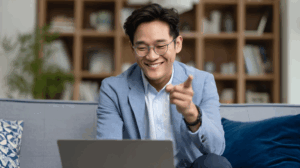
Present Simple Tense 2
English Blogs “Let’s Learn, Explore, and Connect to the World” Present Simple Tense 2 II. Understanding the Present Simple Tense Definition and Structure At its
Reading comprehension quiz
Check out our books and more!

Comic Collections : A Compilation of Daily Professional and Casual Conversations (Book 2)
Master conversation with ‘Comic Collections’ (Book 2) by Cassia North. A fun, insightful guide to professional and casual communication, packed with engaging comics and practical tips for every interaction!
Check out our Blogs!
Read our everyday blogs and gain new knowledge, skills, and inspiration to support your learning journey here in SEKAEL.


Learn through Common English Errors Blogs by recognizing and correcting everyday grammar and usage mistakes.







 At the heart of the Present Perfect Continuous is the concept of duration and ongoing action. It is used to indicate actions that began in the past and have continued up to the present moment. This tense is not just about what has happened; it’s about the process and the ongoing nature of actions and events. It allows speakers to emphasize the duration of an action, often giving a sense of development or progression.
At the heart of the Present Perfect Continuous is the concept of duration and ongoing action. It is used to indicate actions that began in the past and have continued up to the present moment. This tense is not just about what has happened; it’s about the process and the ongoing nature of actions and events. It allows speakers to emphasize the duration of an action, often giving a sense of development or progression. One of the unique features of the Present Perfect Continuous is its ability to bridge past actions with the present. Unlike the simple past, which detaches actions from the present, this tense keeps them relevant by focusing on their ongoing impact or continuation. It is a tense that is deeply rooted in the here and now, even as it reaches back into the past.
One of the unique features of the Present Perfect Continuous is its ability to bridge past actions with the present. Unlike the simple past, which detaches actions from the present, this tense keeps them relevant by focusing on their ongoing impact or continuation. It is a tense that is deeply rooted in the here and now, even as it reaches back into the past. The Present Perfect Continuous is crucial in English communication for its ability to express actions in a way that simple past or present tenses cannot. It adds depth to conversations about experiences, ongoing projects, or situations that are evolving over time. Mastery of this tense allows for more nuanced and precise expression, especially in scenarios where the duration and continuity of actions are important.
The Present Perfect Continuous is crucial in English communication for its ability to express actions in a way that simple past or present tenses cannot. It adds depth to conversations about experiences, ongoing projects, or situations that are evolving over time. Mastery of this tense allows for more nuanced and precise expression, especially in scenarios where the duration and continuity of actions are important. For learners of English, understanding and mastering the Present Perfect Continuous can be challenging due to its unique structure and use. However, it also presents an opportunity to delve deeper into the complexities of English and to enhance one’s ability to communicate more precisely about time and action.
For learners of English, understanding and mastering the Present Perfect Continuous can be challenging due to its unique structure and use. However, it also presents an opportunity to delve deeper into the complexities of English and to enhance one’s ability to communicate more precisely about time and action. The Present Perfect Continuous tense is more than just a grammatical rule; it’s a vital tool for expressing ongoing actions and experiences in relation to the present. Its mastery is crucial for anyone looking to articulate the nuances of time and continuity in English. As we dive deeper into this tense, we will explore its formation, uses, and the nuances that make it an indispensable part of effective communication.
The Present Perfect Continuous tense is more than just a grammatical rule; it’s a vital tool for expressing ongoing actions and experiences in relation to the present. Its mastery is crucial for anyone looking to articulate the nuances of time and continuity in English. As we dive deeper into this tense, we will explore its formation, uses, and the nuances that make it an indispensable part of effective communication.





 Daily Journaling: Incorporate the Present Perfect Simple in your daily journal entries. Write about new experiences, achievements, or changes in your life.
Daily Journaling: Incorporate the Present Perfect Simple in your daily journal entries. Write about new experiences, achievements, or changes in your life. Scenario-Based Role Play: Engage in role-playing exercises with scenarios that involve discussing past experiences, accomplishments, or changes.
Scenario-Based Role Play: Engage in role-playing exercises with scenarios that involve discussing past experiences, accomplishments, or changes. Present Perfect Challenges: Set daily or weekly challenges where you focus on using the Present Perfect Simple in conversations or writing.
Present Perfect Challenges: Set daily or weekly challenges where you focus on using the Present Perfect Simple in conversations or writing. Conversation Practice: During conversations, try to narrate recent experiences or changes using the Present Perfect Simple. Discuss things like recent accomplishments, life changes, or new experiences.
Conversation Practice: During conversations, try to narrate recent experiences or changes using the Present Perfect Simple. Discuss things like recent accomplishments, life changes, or new experiences.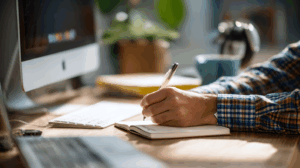 Experience Sharing: Write about your life experiences, such as trips, achievements, or significant life changes, using the Present Perfect Simple.
Experience Sharing: Write about your life experiences, such as trips, achievements, or significant life changes, using the Present Perfect Simple. Reflective Essays: Write essays reflecting on how certain aspects of your life or the world have changed over time.
Reflective Essays: Write essays reflecting on how certain aspects of your life or the world have changed over time. Podcasts and Audiobooks: Listen to podcasts or audiobooks where hosts often discuss experiences, news, and life stories. Focus on how they use the Present Perfect Simple tense.
Podcasts and Audiobooks: Listen to podcasts or audiobooks where hosts often discuss experiences, news, and life stories. Focus on how they use the Present Perfect Simple tense.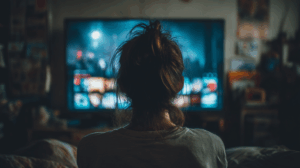 Movies and TV Shows: Watch films and series in English, paying close attention to dialogues that use the Present Perfect Simple, especially in narratives involving life experiences or changes.
Movies and TV Shows: Watch films and series in English, paying close attention to dialogues that use the Present Perfect Simple, especially in narratives involving life experiences or changes. Storytelling: Create stories where characters discuss their past experiences or how their lives have changed, using the Present Perfect Simple tense.
Storytelling: Create stories where characters discuss their past experiences or how their lives have changed, using the Present Perfect Simple tense. Blogging: If you have a blog, write posts about your personal experiences, accomplishments, or changes using the Present Perfect Simple.
Blogging: If you have a blog, write posts about your personal experiences, accomplishments, or changes using the Present Perfect Simple. Expanding your practice with the Present Perfect Simple through diverse exercises and real-life application is key to mastering its use. Consistent practice, whether through speaking, writing, listening, or engaging with educational resources, will enhance your ability to use this tense effectively, enriching your overall English communication skills.
Expanding your practice with the Present Perfect Simple through diverse exercises and real-life application is key to mastering its use. Consistent practice, whether through speaking, writing, listening, or engaging with educational resources, will enhance your ability to use this tense effectively, enriching your overall English communication skills.


 In the dynamic world of digital media, video editing has emerged as a skill in high demand. With the proliferation of online content, advertising, and corporate branding increasingly reliant on video, the need for skilled video editors has never been greater. However, for beginners armed with video editing skills, the question often arises: How does one break into this competitive field and land a job?
In the dynamic world of digital media, video editing has emerged as a skill in high demand. With the proliferation of online content, advertising, and corporate branding increasingly reliant on video, the need for skilled video editors has never been greater. However, for beginners armed with video editing skills, the question often arises: How does one break into this competitive field and land a job? This article is crafted to guide you, the aspiring video editor, on your journey to securing a position in this exciting and evolving industry. Whether you dream of cutting trailers for the next blockbuster movie, crafting compelling advertisements, or producing engaging content for digital platforms, understanding the pathway to employment is key. We’ll explore the landscape of the video editing job market, offer tips on building a strong foundational skill set, and provide practical advice on creating a portfolio, gaining experience, and navigating the job application process.
This article is crafted to guide you, the aspiring video editor, on your journey to securing a position in this exciting and evolving industry. Whether you dream of cutting trailers for the next blockbuster movie, crafting compelling advertisements, or producing engaging content for digital platforms, understanding the pathway to employment is key. We’ll explore the landscape of the video editing job market, offer tips on building a strong foundational skill set, and provide practical advice on creating a portfolio, gaining experience, and navigating the job application process.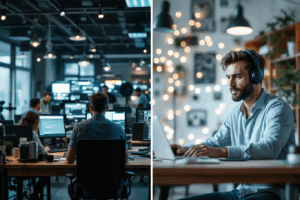 Types of Employment:
Types of Employment: Industries in Demand:
Industries in Demand: Emerging Trends:
Emerging Trends: Geographical Hotspots:
Geographical Hotspots: Salary Expectations:
Salary Expectations: Required Skills and Qualifications:
Required Skills and Qualifications:
 By building a strong foundation in video editing, you not only enhance your technical abilities but also develop a deeper understanding of the creative aspects of storytelling. This combination of skills is what will make your work stand out to potential employers and clients.
By building a strong foundation in video editing, you not only enhance your technical abilities but also develop a deeper understanding of the creative aspects of storytelling. This combination of skills is what will make your work stand out to potential employers and clients.
 Breaking into the field of video editing often requires not just skill, but also experience and industry exposure. Here are strategies to help you gain valuable experience and make your mark in the video editing world:
Breaking into the field of video editing often requires not just skill, but also experience and industry exposure. Here are strategies to help you gain valuable experience and make your mark in the video editing world: Gaining practical experience and exposure is as important as honing your technical skills. It builds your confidence, expands your professional network, and enhances your resume, making you a more attractive candidate to potential employers.
Gaining practical experience and exposure is as important as honing your technical skills. It builds your confidence, expands your professional network, and enhances your resume, making you a more attractive candidate to potential employers.
 Stay Updated with Software and Tools:
Stay Updated with Software and Tools: Explore Advanced Techniques and Styles:
Explore Advanced Techniques and Styles: Attend Workshops and Industry Conferences:
Attend Workshops and Industry Conferences: Seek Mentorship and Feedback:
Seek Mentorship and Feedback: Pursue Further Education:
Pursue Further Education: Explore New Areas and Niches:
Explore New Areas and Niches: Set Long-Term Goals and Career Path:
Set Long-Term Goals and Career Path:





 Understanding Time Relevance: Use the Present Perfect Simple for actions that occurred at an unspecified time before now or for situations that started in the past and are still true. Remember, the focus is on the result or relevance to the present.
Understanding Time Relevance: Use the Present Perfect Simple for actions that occurred at an unspecified time before now or for situations that started in the past and are still true. Remember, the focus is on the result or relevance to the present.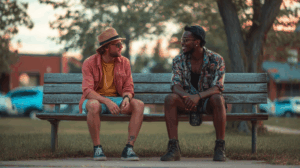 Appropriate Contexts: Utilize this tense when discussing life experiences, changes over time, or completed actions with present relevance.
Appropriate Contexts: Utilize this tense when discussing life experiences, changes over time, or completed actions with present relevance.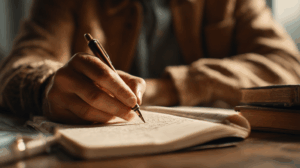 Use with Time Expressions: Familiarize yourself with time expressions commonly used with the Present Perfect Simple, such as ‘ever’, ‘never’, ‘since’, ‘for’, ‘yet’, and ‘already’.
Use with Time Expressions: Familiarize yourself with time expressions commonly used with the Present Perfect Simple, such as ‘ever’, ‘never’, ‘since’, ‘for’, ‘yet’, and ‘already’.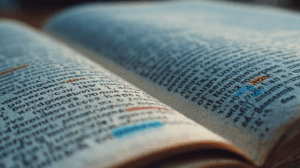 Wrong Verb Form: Ensure you use the past participle form of the verb. Regular verbs typically end in -ed, but many common verbs are irregular and require memorization.
Wrong Verb Form: Ensure you use the past participle form of the verb. Regular verbs typically end in -ed, but many common verbs are irregular and require memorization. Incorrect Time References: Avoid using the Present Perfect Simple with specific past time references. Phrases like ‘last year’, ‘in 2010’, or ‘yesterday’ require the Past Simple tense.
Incorrect Time References: Avoid using the Present Perfect Simple with specific past time references. Phrases like ‘last year’, ‘in 2010’, or ‘yesterday’ require the Past Simple tense. Overuse: Be cautious of overusing the Present Perfect Simple. Assess if the action or situation genuinely requires this tense or if another tense like the Past Simple or Present Simple is more appropriate.
Overuse: Be cautious of overusing the Present Perfect Simple. Assess if the action or situation genuinely requires this tense or if another tense like the Past Simple or Present Simple is more appropriate. Regular Practice: Incorporate the Present Perfect Simple into your daily conversations and written communication where appropriate.
Regular Practice: Incorporate the Present Perfect Simple into your daily conversations and written communication where appropriate. Language Exercises: Engage in exercises that focus on converting sentences from the Past Simple to the Present Perfect Simple and vice versa to understand their differences.
Language Exercises: Engage in exercises that focus on converting sentences from the Past Simple to the Present Perfect Simple and vice versa to understand their differences. Reading and Listening Comprehension: Pay attention to the use of the Present Perfect Simple in various texts, movies, and conversations to understand its application in different contexts.
Reading and Listening Comprehension: Pay attention to the use of the Present Perfect Simple in various texts, movies, and conversations to understand its application in different contexts. Mastering the Present Perfect Simple tense is essential for expressing actions and experiences relevant to the present. By understanding its proper use and common mistakes, and through regular practice, you can significantly improve your proficiency in English grammar. This understanding not only enhances your grammatical accuracy but also enriches your ability to express experiences and actions with appropriate temporal context.
Mastering the Present Perfect Simple tense is essential for expressing actions and experiences relevant to the present. By understanding its proper use and common mistakes, and through regular practice, you can significantly improve your proficiency in English grammar. This understanding not only enhances your grammatical accuracy but also enriches your ability to express experiences and actions with appropriate temporal context.








 Effectively forming questions and negatives in the Present Perfect Simple is crucial for asking about experiences, discussing completed actions, and describing ongoing effects. Understanding these structures adds depth and versatility to your English communication, particularly in expressing actions and experiences relevant to the present.
Effectively forming questions and negatives in the Present Perfect Simple is crucial for asking about experiences, discussing completed actions, and describing ongoing effects. Understanding these structures adds depth and versatility to your English communication, particularly in expressing actions and experiences relevant to the present.



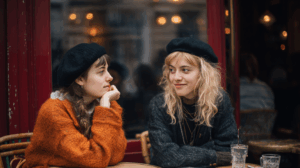







 The Present Perfect Simple tense is a key element in English grammar, allowing speakers to express a range of actions and states related to past experiences, changes over time, and recently completed actions. Its versatility makes it essential for discussing past actions in a way that emphasizes their relevance to the present. In the next sections, we will explore forming questions and negatives, and practical usage tips.
The Present Perfect Simple tense is a key element in English grammar, allowing speakers to express a range of actions and states related to past experiences, changes over time, and recently completed actions. Its versatility makes it essential for discussing past actions in a way that emphasizes their relevance to the present. In the next sections, we will explore forming questions and negatives, and practical usage tips.







 The Present Perfect Simple tense is essential for expressing a variety of actions and states in English, particularly those linking the past to the present. Its correct usage reflects not just a grasp of grammar but also an understanding of the nuances of English communication. In the following sections, we will delve into its specific uses, how to form questions and negatives, and practical tips for effective usage.
The Present Perfect Simple tense is essential for expressing a variety of actions and states in English, particularly those linking the past to the present. Its correct usage reflects not just a grasp of grammar but also an understanding of the nuances of English communication. In the following sections, we will delve into its specific uses, how to form questions and negatives, and practical tips for effective usage.

 At its core, the Present Perfect Simple tense serves to link actions or events that occurred at an unspecified time in the past with the present. Unlike the simple past, which places actions firmly in the past, the Present Perfect Simple keeps these actions relevant to the current moment. This connection is crucial in conversations about life experiences, changes, accomplishments, and ongoing situations.
At its core, the Present Perfect Simple tense serves to link actions or events that occurred at an unspecified time in the past with the present. Unlike the simple past, which places actions firmly in the past, the Present Perfect Simple keeps these actions relevant to the current moment. This connection is crucial in conversations about life experiences, changes, accomplishments, and ongoing situations. What sets the Present Perfect Simple apart in English is its ability to express actions without specifying the exact time they occurred. This is particularly important in English, as it reflects the language’s focus on the state of an action rather than its specific timeline. It’s a tense that adds depth to conversations, allowing speakers to discuss their experiences and changes in their lives in a way that connects the past to the present.
What sets the Present Perfect Simple apart in English is its ability to express actions without specifying the exact time they occurred. This is particularly important in English, as it reflects the language’s focus on the state of an action rather than its specific timeline. It’s a tense that adds depth to conversations, allowing speakers to discuss their experiences and changes in their lives in a way that connects the past to the present. One of the most compelling uses of the Present Perfect Simple is in discussing life experiences. Phrases like “I have traveled” or “I have learned” open doors to deeper conversations about personal growth, experiences, and the journey of life. This tense allows for an exploration of one’s past not as a distant memory, but as an integral part of who they are in the present.
One of the most compelling uses of the Present Perfect Simple is in discussing life experiences. Phrases like “I have traveled” or “I have learned” open doors to deeper conversations about personal growth, experiences, and the journey of life. This tense allows for an exploration of one’s past not as a distant memory, but as an integral part of who they are in the present. In describing changes over time, the Present Perfect Simple is unparalleled. It helps in illustrating how people, places, or situations have evolved up to the present. When someone says, “The city has changed,” it invites an understanding of the city’s transformation over an undefined period, emphasizing the current state rather than the historical details.
In describing changes over time, the Present Perfect Simple is unparalleled. It helps in illustrating how people, places, or situations have evolved up to the present. When someone says, “The city has changed,” it invites an understanding of the city’s transformation over an undefined period, emphasizing the current state rather than the historical details. For learners of English, grasping the Present Perfect Simple is both a challenge and an opportunity. It requires a shift in thinking from time-focused tenses to a more fluid understanding of time and action. Mastering this tense is often seen as a milestone in English proficiency, as it allows for more nuanced and sophisticated expression.
For learners of English, grasping the Present Perfect Simple is both a challenge and an opportunity. It requires a shift in thinking from time-focused tenses to a more fluid understanding of time and action. Mastering this tense is often seen as a milestone in English proficiency, as it allows for more nuanced and sophisticated expression. The Present Perfect Simple tense is a vital tool in the English language, allowing speakers to connect their past actions and experiences to the present. Its mastery is essential for anyone looking to express themselves fully in English, as it provides a way to discuss experiences, changes, and ongoing situations in a contextually rich and meaningful way. As we delve deeper into this tense, we’ll explore its formation, uses, and the nuances that make it an indispensable part of English communication.
The Present Perfect Simple tense is a vital tool in the English language, allowing speakers to connect their past actions and experiences to the present. Its mastery is essential for anyone looking to express themselves fully in English, as it provides a way to discuss experiences, changes, and ongoing situations in a contextually rich and meaningful way. As we delve deeper into this tense, we’ll explore its formation, uses, and the nuances that make it an indispensable part of English communication.

 Future Plans Discussion: Engage in conversations or writing exercises where you discuss your future plans using ‘be going to’. Talk about your next vacation, career goals, or weekend plans.
Future Plans Discussion: Engage in conversations or writing exercises where you discuss your future plans using ‘be going to’. Talk about your next vacation, career goals, or weekend plans. Predicting Future Events: Practice making predictions about future events based on current evidence. This could involve discussing weather changes, outcomes of sports events, or global trends.
Predicting Future Events: Practice making predictions about future events based on current evidence. This could involve discussing weather changes, outcomes of sports events, or global trends. Role-playing Scenarios: Participate in role-playing exercises that require planning future actions. For example, simulate planning a trip, organizing an event, or making decisions about future studies or career moves.
Role-playing Scenarios: Participate in role-playing exercises that require planning future actions. For example, simulate planning a trip, organizing an event, or making decisions about future studies or career moves. Daily Usage: Try to incorporate ‘be going to’ into your daily conversations. This could be as simple as telling a friend what you are going to do after work or discussing your plans for the next holiday.
Daily Usage: Try to incorporate ‘be going to’ into your daily conversations. This could be as simple as telling a friend what you are going to do after work or discussing your plans for the next holiday. Journal Entries: Write journal entries about your future plans using ‘be going to’. Reflect on what you plan to achieve in the coming days, months, or years.
Journal Entries: Write journal entries about your future plans using ‘be going to’. Reflect on what you plan to achieve in the coming days, months, or years. Social Media Posts: Use social media to share your future plans or predictions about specific topics, employing the ‘be going to’ construction.
Social Media Posts: Use social media to share your future plans or predictions about specific topics, employing the ‘be going to’ construction. YouTube Channels: Watch educational videos on channels dedicated to English learning, particularly those that focus on verb tenses and future constructions.
YouTube Channels: Watch educational videos on channels dedicated to English learning, particularly those that focus on verb tenses and future constructions. Podcasts and Audiobooks: Listen to podcasts or audiobooks where speakers often discuss future plans or predictions. Pay attention to how ‘be going to’ is used in different contexts.
Podcasts and Audiobooks: Listen to podcasts or audiobooks where speakers often discuss future plans or predictions. Pay attention to how ‘be going to’ is used in different contexts. Movies and TV Shows: Watch English movies and shows, noting how characters talk about their future plans or make predictions.
Movies and TV Shows: Watch English movies and shows, noting how characters talk about their future plans or make predictions. Short Stories: Write short stories where characters are planning future actions. Focus on using ‘be going to’ to express their intentions and plans.
Short Stories: Write short stories where characters are planning future actions. Focus on using ‘be going to’ to express their intentions and plans. Future Scenarios: Create scenarios set in the future and describe them using ‘be going to’. This could be about technological advancements, environmental changes, or personal life in the future.
Future Scenarios: Create scenarios set in the future and describe them using ‘be going to’. This could be about technological advancements, environmental changes, or personal life in the future. Expanding your practice with the ‘be going to’ construction is key to mastering its use in expressing future plans and predictions. Through a combination of speaking, writing, listening, and engaging with educational resources, you can enhance your grasp of this essential aspect of English grammar. Regular practice and application in varied contexts will build your confidence and fluency in using ‘be going to’ for future intentions.
Expanding your practice with the ‘be going to’ construction is key to mastering its use in expressing future plans and predictions. Through a combination of speaking, writing, listening, and engaging with educational resources, you can enhance your grasp of this essential aspect of English grammar. Regular practice and application in varied contexts will build your confidence and fluency in using ‘be going to’ for future intentions.